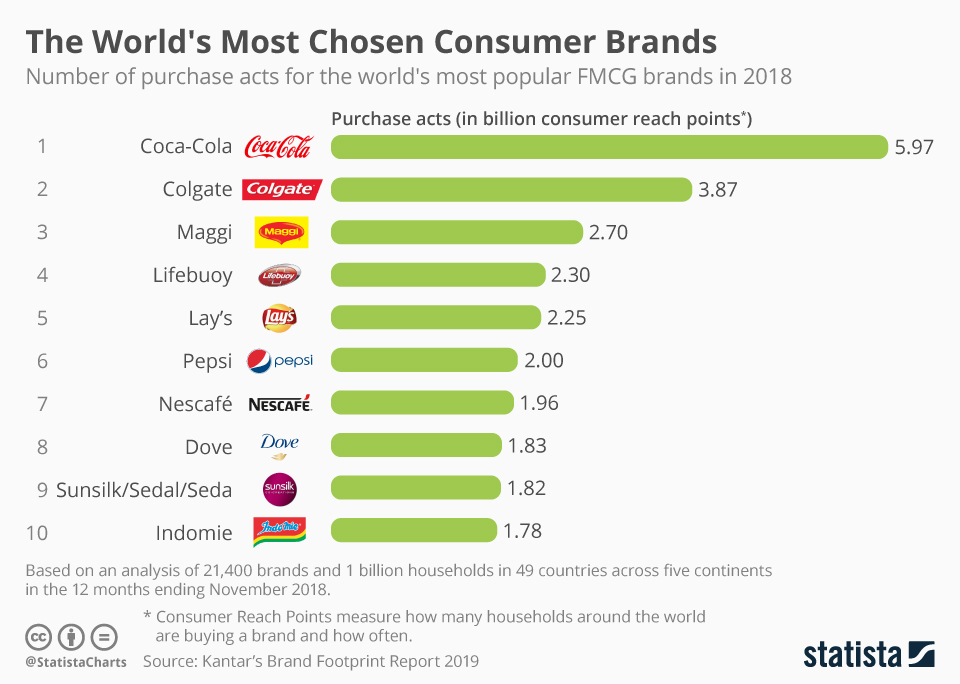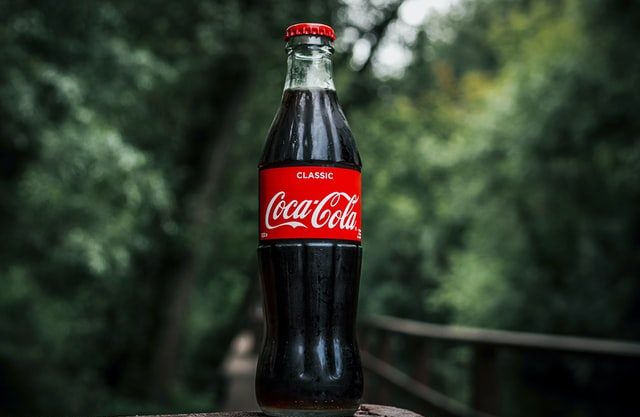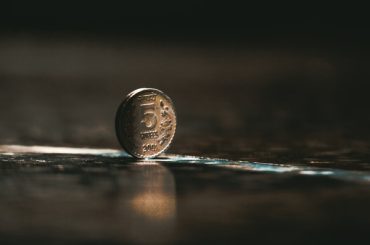Last Sunday, I went to my nearby Kirana store to get some bread. As I was waiting for the shopkeeper to fetch me a loaf, the TV in his store caught my attention. Some news channel was showing the horror that is going on some parts of the world.
Noticing this, the shopkeeper told me something, which translated in English, is “Only if humans could forget the differences and enjoy the commonality, the world would be a better place…” I nodded in agreement but kept thinking, people everywhere are so different, be it culture, race, nationality, etc. So how do we find something familiar?… The answer to my question was resting right next to the TV, in its iconic shape, chilled as everyone likes it…A bottle of Coke.
What is it about Coke that makes it so much more than a refreshment? How has it transcended from being a refreshment drink to a feeling? Let’s deep dive into all of this and much more as we take a look at the marketing mix (4Ps), plan, and strategy of Coca-Cola.
The Marketing mix (4Ps), plan, and strategy of Coca-Cola.
A big buffet of Products
Coca-Cola has five major categories for Beverages; Sparkling Soft Water, Waters and Hydration, Juices, Dairy and Plant-based, Coffees, and Teas. There are roughly 500 beverages that make up these categories—the most popular are Coca-Cola, Sprite, Fanta, Dasani.
Let me share a brief history of Coca-Cola. It was first produced as syrup by Dr. John Stith Pemberton, a local pharmacist in Atlantia, Georgia, on May 8, 1886. He then carried a jug of this syrup to Jacobs’ Pharmacy, which was sampled pronounced “excellent” and placed on sale for five cents a glass as a soda fountain drink. Carbonated water was teamed with the new syrup to produce the drink we know as Coca-Cola.
Fun Fact: Did you know that Dr. Pemberton’s friend, Frank M Robinson, came up with the name Coca‑Cola. He wrote it out by hand in the Spencerian script that is still used as the logo.
So precisely what is the product when it comes to Coca-Cola? Is it the drink that you and I enjoy on a hot summer afternoon?… Or is it the iconic contour design bottle conceptualized in 1916, and to date, remains the same?… Actually, it is none of these. Leave alone bottling; Coca-Cola doesn’t even complete most of their products!
Coca-Cola manufacturers sell syrups to authorized bottlers. These bottlers then add water and perform carbonation to make and sell finished Coca-Cola products. This is called Concentrate Operations.
Having many independent bottlers created several macros and macro-economic challenges for the firm, as smaller independent bottlers may face problems in continuing business when faced with economic hurdles. The Company started its Bottling Investments Group, identifying struggling franchisees, providing them with financial and institutional support.
Historically, the most considerable risk that the Company ever took came on April 23, 1985. It announced that it was changing the formula of the world’s most popular soft drink! It was called “new Coke.” The Company wanted to revamp the formula and the whole soft drinks segment, and they did just that!
We set out to change the dynamics of sugar colas in the United States, and we did exactly that — albeit not in the way we had planned.
Then Chairman Roberto Goizueta
The decision to change Coke’s original formula was based on the fact that Coca-Cola was losing the market share, intensified by the lack of consumer preference and awareness. Over 200,000 consumers tested the change in formula and its taste, but these tests failed to show consumers’ emotional bonding with Coke.
The below visualization shows the world’s most chosen consumer brands, and Coca-Cola tops the chart!
 You will find more infographics at Statista
You will find more infographics at Statista
Coca-Cola’s first stint in the Indian market was in 1950 with the opening of the first bottling plant by Pure Drinks Ltd., in New Delhi. The Company had to exit the country in 1977 due to India’s Foreign Exchange Act. In 1992, Coca-Cola returned to India. It bought Parle and hence acquired Thums Up, Limca, and Gold Spot. Thums Up- The Phoenix of the Indian Cola industry
Flexible Pricing Strategy
Coca-Cola, in its marketing mix, follows a pricing strategy called price discrimination. Price discrimination is a microeconomic pricing strategy where identical or largely similar goods or services are sold at different prices by the same provider in different markets. In general, an oligopoly is a market characterized by a small number of firms that realize they are interdependent in their pricing and output policies. The beverages market is an oligopoly, with a small number of manufacturers and many purchasers.
Between 1886 and 1959, the price of Coca-Cola was set at five cents or one nickel. This was possible for reasons including bottling contracts the Company signed in 1899, advertising, vending machine technology, and a relatively low inflation rate.
In 1899, when approached by two lawyers, the then Coca-Cola president, Asa Candler, sold the bottling rights to them for a meager amount of one dollar, thinking bottling would never take off, as soda fountains were the predominant way of consuming carbonated beverages in the United States. Bottling did become popular, surpassing fountain sales in 1928.
Since the contract was non-expiring, Coca-Cola had to sell their syrup at a fixed price. This meant that Coca-Cola’s profits could be maximized only by maximizing the amount of product sold, minimizing the price to the consumer. This led to Coca-Cola aggressively associating their product with a five-cent price tag, providing incentive for retailers to sell at that price even though a higher price at a lower volume would have brought them profit otherwise.
Another aspect to consider was that vending machines were prevalent during that time, and Coca-Cola owned around 85% of the total vending machines in the US in the 1950s. These existing vending machines couldn’t reliably make the change, and hence the Company feared requiring multiple coins from the customer may deter them from buying the product. Reluctant to double the price, the Company preferred to stick to five cents.
When it comes to developing countries like India, where consumers are very price-sensitive and may flip to competitors, especially Pepsi, keeping this in mind, both parties agree to price parity in each segment.
The way Coca-Cola prices its product is exciting. For the sake of this article, we will use one product as an example here, the Classic Coca-Cola. As we know, Coca-Cola’s price in the modern day is not fixed. We can purchase it for as low as 50 cents a can and as high as $5.
To illustrate, if you buy a can for 50 cents, you are buying the product as a slab of 24 cans. So, there is saving, but it’s a quantity-buy. For a little more, $1.49, you will get a chilled can at the supermarket. You’ll have to pay a little more in a petrol station or convenience store since it is more of an impulse buy. In a vending machine, which is generally located at places with no other food source, the price is higher at around $2.50. In a cafe, it would cost approximately $4.50. And the same Coke in a hotel would cost about $5.
The different price points for Coke are driven by the type of consumption, “the need state”, or “the desire state”. Therefore, the pricing power resides in the usage and the location, and the utility that the customer derives from that.
When it tries to enter a new market, mainly those sensitive to price, Coca-Cola prices its products at lower price points than its competitors in that segment. Once the brand is established, it repositions itself as a premium brand through various promotions.
With such a genius pricing strategy in its marketing mix, Coca-Cola has been able to achieve such a high margin of 27%. The below graph shows Coca-Cola’s global revenues from 2009 to 2020, as we see its revenues peaked in 2012:

Creative Promotional Strategy
If we had to choose one brand that has always been consistent with its promotions in marketing strategy, it is Coca-Cola. Never deviating from the basics, Coke has always been consistent with its projection.
From Santa Clause, as we know him, to the coupon culture we see every day, there are many such things like these that we owe to Coca-Cola. They have had such diverse campaigns, yet their underlying theme has been the same throughout history, Happiness! With slogans like “Enjoy,” “You can’t beat the feeling,” “Happiness,” coke has never been a beverage, but a “feeling.”
Coca-Cola did not create the legend of Santa Claus. But Coca-Cola advertising did play a big role in shaping the jolly character we know today.
The Coca Cola Company
Bill Backer, the creative director on the Coca-Cola account, was once flying to London to meet up with music director Billy Davis to shoot a new ad for Coke. The plane had to be rerouted to Ireland due to heavy fog in London. Most of the passengers were irritated by the situation. The next day Backer saw many of the passengers, some of whom were the most irate the previous day, laughing and sharing stories over a bottle of Coke. This was an eye-opener for Backer; he realized Coke wasn’t just a refresher but a commonality shared by people worldwide.
This set Bill Backer and team to shoot the famous “I’d like to buy the world a Coke.” When released in the US in July 1971, the Coca-Cola company received more than 100,000 letters about the commercial. Billy Davis, the music director on Coke’s account, wanted to produce a record version of the commercial, releasing two versions, by a group of studio singers who called themselves “The Hillside Singers” and later New Seekers. Both versions topped charts and were recorded in a wide range of languages, and sheet music is one of the top-selling to date.
The “I’d like to buy the world a Coke” ad:
In the context of India, Coca-Cola has had a mix of jingles with celebrity endorsements. One of the most iconic ads was the “Thanda Matlab Coca-Cola,” released in 2003, featuring Amir Khan. This ad highlighted how Indians related to the brand as cool relief. Coca-Cola also understood the importance of festivals and cricket in Indian culture and targeted the same.
Campaigns like “Share a Coke Campaign,” “Fifa World Cup Campaign,” “Happiness Machine Campaign” helped Coca-Cola become an industry leader and become a part of the everyday lives of its consumers.
The “Share a Coke” campaign:
The “Happiness Machine” campaign:
Coca-Cola at international Places
Coca-Cola is present in more than 200 countries and territories. Being in the business for more than 135 years, Coca-Cola has a vast and extensive distribution network. It has a total of 6 geographic regions of operations, including Europe, Latin America, North America, the Pacific, Eurasia & Africa. As mentioned earlier, Coca-Cola relies on its bottling partners for the packaging and distribution of its products.
The visualization below shows the Market Share of leading Carbonated Soft Drinks companies in the United States. Coca-Cola has been a clear market leader.

While many view our Company as simply “Coca-Cola,” our system operates through multiple local channels. Our Company manufactures and sells concentrates, beverage bases, and syrups to bottling operations, owns the brands, and is responsible for consumer brand marketing initiatives. Our bottling partners manufacture, package, merchandise and distribute the final branded beverages to our customers and vending partners, who then sell our products to consumers.
The Coca Cola Company
Once the bottlers are done with the packaging (predefined by the Company), the bottles are transported to the stockists, distributors, and retailers from where the final consumers buy the product. Coca-Cola has a pervasive distribution channel. In India, Coca-Cola has around 2.6 million outlets to sell its products.
Coca-Cola has a reverse supply chain where they collect the leftover glass bottles from the retailers and convert them into reusable products, thus saving cost and additional resources.
Conclusion
In its latest News Release, the Company reported strong results in the second quarter. The Coca-Cola Company reported strong second-quarter 2021 results and year-to-date performance.
Our results in the second quarter show how our business is rebounding faster than the overall economic recovery, led by our accelerated transformation. As a result, we are encouraged, and, despite the asynchronous nature of the recovery, we are raising our full-year guidance. We are executing against our growth plans, and our system is aligned. We are better equipped than ever to win in this growing, vibrant industry and to accelerate value creation for our stakeholders.
James Quincey, Chairman, and CEO of The Coca-Cola Company
This signifies a strong recovery from the setback caused by the pandemic. As we see, all of the above Ps in its marketing strategy and mix have contributed to Coca-Cola’s success, both during pre-pandemic and in its recovery post-pandemic.
That’s it for this one; I need a Coke now 🙂
-AMAZONPOLLY-ONLYWORDS-START-
Also, check out our most loved stories below

Why did Michelin, a tire company, decide to rate restaurants?
Is ‘Michelin Star’ by the same Michelin that sells tires, yes, it is! But Why? How a tire company evaluations became most coveted in the culinary industry?

Starbucks prices products on value not cost. Why?
In value-based pricing, products are price based on the perceived value instead of cost. Starbucks has mastered the art of value-based pricing. How?

Nike doesn’t sell shoes. It sells an idea!!
Nike has built one of the most powerful brands in the world through its benefit-based marketing strategy. What is this strategy and how Nike has used it?

Domino’s is not a pizza delivery company. What is it then?
How one step towards digital transformation completely changed the brand perception of Domino’s from a pizza delivery company to a technology company?

Why does Tesla’s Zero Dollar Budget Marketing Strategy work?
Touted as the most valuable car company in the world, Tesla firmly sticks to its zero dollar marketing. Then what is Tesla’s marketing strategy?

Yahoo! The story of strategic mistakes
Yahoo’s story or case study is full of strategic mistakes. From wrong to missed acquisitions, wrong CEOs, the list is endless. No matter how great the product was!!

Apple – A Unique Take on Social Media Strategy
Apple’s social media strategy is extremely unusual. In this piece, we connect Apple’s unique and successful take on social media to its core values.
-AMAZONPOLLY-ONLYWORDS-END-

















